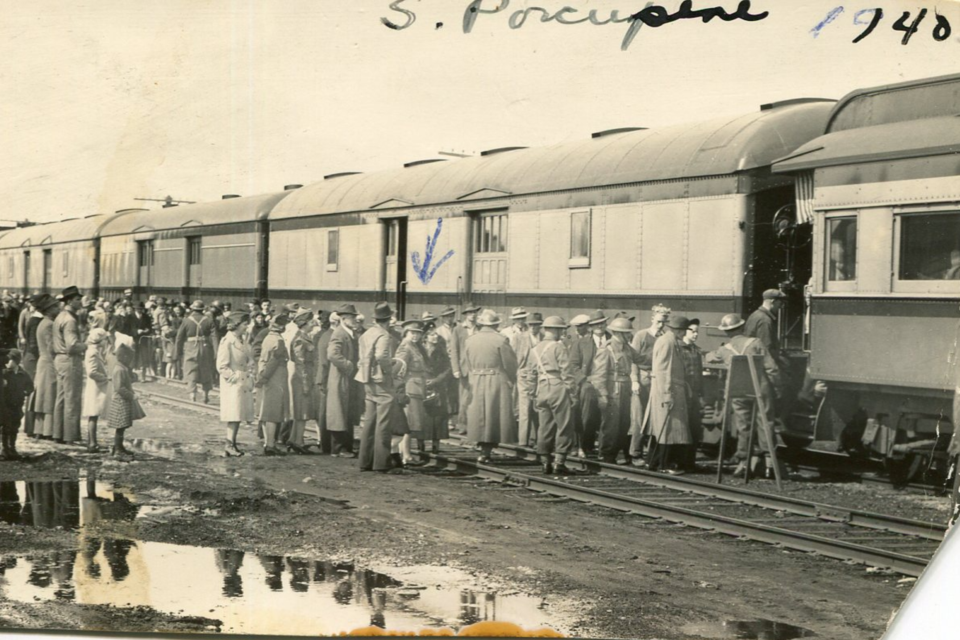Optimism was cut short when the Second World War started. Mining slowed down everywhere in Canada. Labour again became scarce and marginal mines like Vipond closed. Men and women from the area were pressed into service on both the battlefield or on the home front.
All the mines contributed to the war. On top of produced gold, Hollinger mined scheelite as well. The Dome Mine made parts and equipment for pumps in cargo vessels. Some companies like Preston East Dome, matched employee donations to the Red Cross and war charities. The mines paid a war bonus of 21 cents a shift.
About one-third of all miners served overseas and over 4,300 First Nations soldiers as well as many Inuit and Metis peoples in Canada joined the military in the Second World War.
On May 9, 1940, 69 people left Timmins on the first organized contingent. Others went to the Algonquin Regiment and by September 4, 1940, they had enough to depart for Camp Borden and onto Belgium and Holland. In January 1942, another 50 men signed up from Timmins with Sgt. Melville in charge of recruiting offices.
The Porcupine had adopted its own bomber squadron called the Porcupine Squadron No. 433. It was a heavy-bomber unit of No. 6 RCAF Group at Skipton-on-Swale in Yorkshire, England. Their motto was, “Qui s'y frotte s'y pique.”
The Timmins Museum: National Exhibition Centre regularly provides TimminsToday readers with a glimpse of the city’s past.
Find out more of what the Timmins museum has to offer here and read more Remember This columns here.
